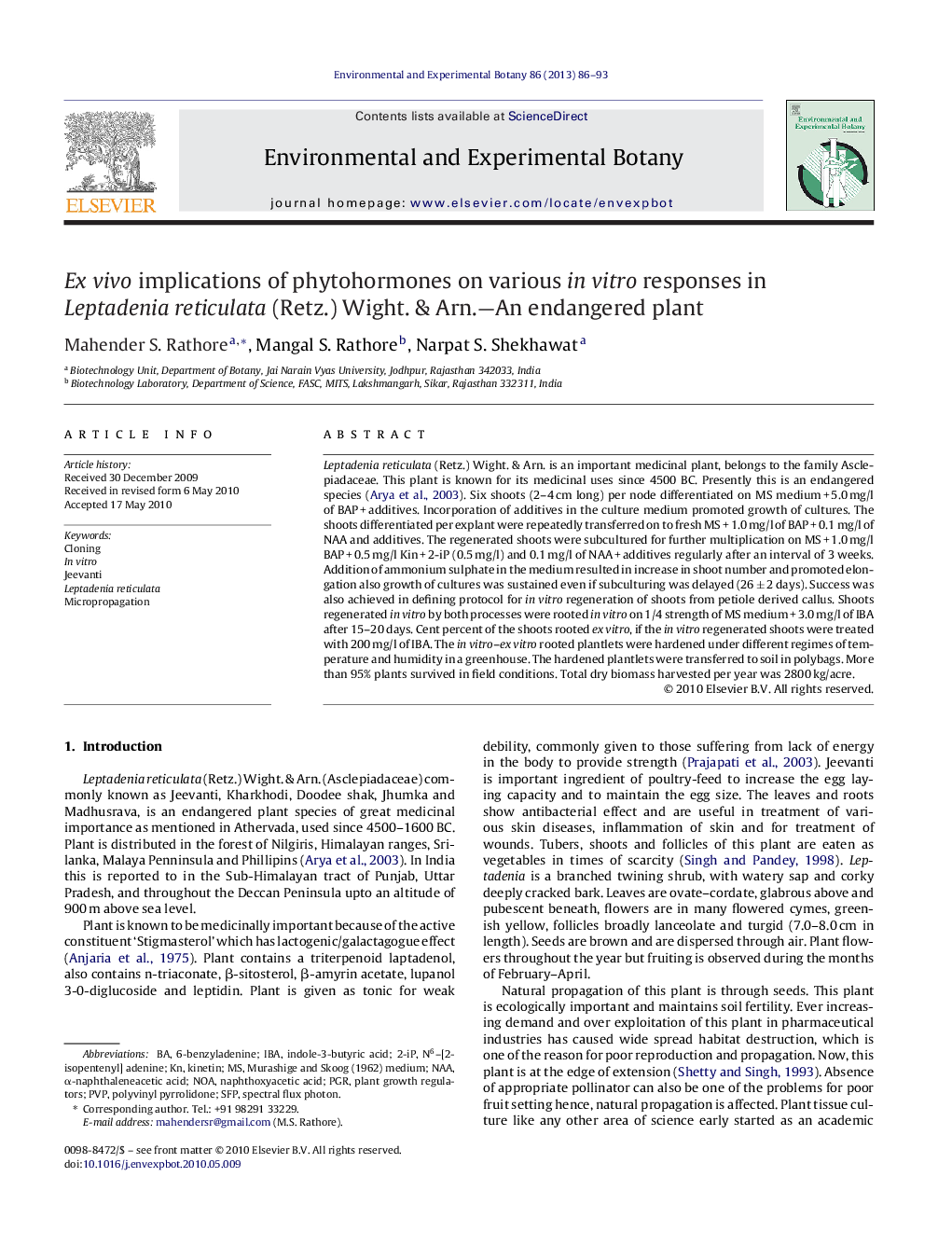| Article ID | Journal | Published Year | Pages | File Type |
|---|---|---|---|---|
| 4554556 | Environmental and Experimental Botany | 2013 | 8 Pages |
Abstract
Leptadenia reticulata (Retz.) Wight. & Arn. is an important medicinal plant, belongs to the family Asclepiadaceae. This plant is known for its medicinal uses since 4500 BC. Presently this is an endangered species (Arya et al., 2003). Six shoots (2-4 cm long) per node differentiated on MS medium + 5.0 mg/l of BAP + additives. Incorporation of additives in the culture medium promoted growth of cultures. The shoots differentiated per explant were repeatedly transferred on to fresh MS + 1.0 mg/l of BAP + 0.1 mg/l of NAA and additives. The regenerated shoots were subcultured for further multiplication on MS + 1.0 mg/l BAP + 0.5 mg/l Kin + 2-iP (0.5 mg/l) and 0.1 mg/l of NAA + additives regularly after an interval of 3 weeks. Addition of ammonium sulphate in the medium resulted in increase in shoot number and promoted elongation also growth of cultures was sustained even if subculturing was delayed (26 ± 2 days). Success was also achieved in defining protocol for in vitro regeneration of shoots from petiole derived callus. Shoots regenerated in vitro by both processes were rooted in vitro on 1/4 strength of MS medium + 3.0 mg/l of IBA after 15-20 days. Cent percent of the shoots rooted ex vitro, if the in vitro regenerated shoots were treated with 200 mg/l of IBA. The in vitro-ex vitro rooted plantlets were hardened under different regimes of temperature and humidity in a greenhouse. The hardened plantlets were transferred to soil in polybags. More than 95% plants survived in field conditions. Total dry biomass harvested per year was 2800 kg/acre.
Keywords
Related Topics
Life Sciences
Agricultural and Biological Sciences
Ecology, Evolution, Behavior and Systematics
Authors
Mahender S. Rathore, Mangal S. Rathore, Narpat S. Shekhawat,
